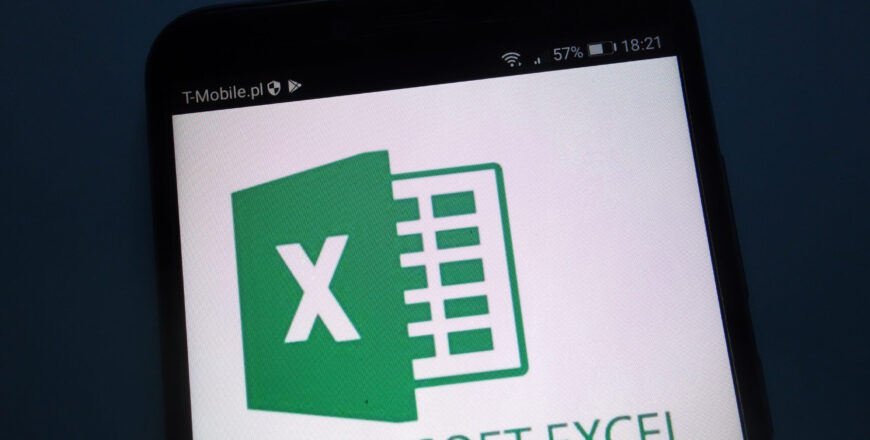Microsoft Excel Basics Course
- Description
- Curriculum
- Reviews
Excel is one of the most popular applications used by over 750 million people worldwide. For more than four decades, Excel has been a fundamental tool for data organization and analysis in various industries, including education, manufacturing, and healthcare. Whether you’re a business professional, a student, or someone looking to enhance your skills, our Microsoft Excel Basics course provides the foundation you need to become proficient in this essential software.
We have designed this course to cater to individuals with different levels of Excel knowledge, including beginners who have never used the program before. If this is your first time using spreadsheets, we will guide you through a step-by-step approach to mastering the basics of MS Excel, starting from the fundamentals and gradually progressing to more advanced functionalities.
We have carefully arranged the topics we will cover in a logical order to ensure that you understand all the fundamentals before diving deep into more advanced Excel features. Throughout the course, you will learn how to navigate the Excel user interface, create and format spreadsheets, input and manipulate data, perform calculations with formulas, visualize data using charts and graphs, and much more.
We strongly encourage everyone taking this course to have a computer with Excel installed so that you follow along when watching the tutorials. The good news is that Excel can be installed on both macOS and Windows, so no matter which platform you’re using, you should be able to use this software.
Why Learn Microsoft Excel
Before you get started with this course, you may want to know why you should take it. Here are some reasons (real-world applications of Excel) why learning Microsoft Excel is beneficial, no matter the field or industry you are in.
Data Analysis and Reporting: Excel is one of the most powerful apps, providing all the tools you need to do data analysis, enabling you to organize, manipulate, and analyze large datasets quickly and efficiently. Data analysis is a valuable skill in roles involving financial analysis, product design, marketing research, project management, and more.
Business and Finance: Some of the other common use cases of Excel and spreadsheets are general financial modeling, budgeting, forecasting, and other financial tasks. If you are a professional in the finance, accounting, and business management sectors, learning how to use Excel will be a very valuable skill.
Data Visualization: Excel can also be used for data visualization tasks. It offers tools that allow you to create charts and graphs, enabling you to present data in a visually appealing and understandable format. If
your work involves creating reports (which is the case for most jobs), learning Excel will be a highly valuable skill.
Task Automation
One of the unique use cases of Excel that most people don’t know about is task automation. Excel has advanced tools, such as macros and functions, that allow you to automate repetitive tasks and increase efficiency in your work. Learning how to use these functionalities can save you time and effort in your daily operations.
Career Advancement: Learning how to use Excel is also a great skill that could enhance your chances of getting a job or a promotion in your career. Proficiency in Microsoft Excel is often listed as a required or preferred skill in job postings across different industries.
What you will learn
This course consists of 15 modules, which include:
- Introduction to Excel
- Getting Started with Excel 2013
- Working With Data and Excel Tables
- Data Validation in Excel
- Analyzing Data and Alternative Data Sets
- Creating Charts and Graphics
- Formatting and Layout
- Conditional Formatting in Excel
- Table and Pivot Table Tips
- Pivot Charts in Excel
- Sorting and Filtering
- Applying Formulas and Functions
- Perform Business Intelligence Analysis
- Create Forecasts and Visualizations
- Printing and sharing in Excel
Who Should Take This Course?
This Excel course is suitable for individuals from various industries, professions, and educational backgrounds. Some of the major categories of people that will benefit from this course include the following;
- Business professionals and employees that frequently need to work with data, create reports, and analyze financial information.
- Students who would love to improve their data management and analysis skills for academic purposes. This skill could also play a major in landing them their first job when they finally get done with school.
- Job seekers who would love to enhance their chances of getting a job by adding Microsoft Excel proficiency to their resume. Excel is an in-demand skill in a lot of industries, so having it on your resume is a bonus for almost every job.
- Individuals who want to increase their productivity and efficiency in their daily tasks.
- Individuals that already know how to use MS Excel but want to refresh their minds with the basics of the software.
The time is now, don’t miss out on the opportunity to develop your Microsoft Excel skills. Enroll in our Microsoft Excel Basics course today and unlock several opportunities in your career or business.
-
1Module 01 Introduction to ExcelText lesson
-
2Module 02 Getting Started with Excel 2013Text lesson
-
3Module 03 Working With Data and Excel TablesText lesson
-
4Module-04-Data-Validation-in-ExcelText lesson
-
5Module 05 Analyzing Data and Alternative Data SetsText lesson
-
6Module 06 Creating Charts and GraphicsText lesson
-
7Module 07 Formatting and LayoutText lesson
-
8Module 08 Conditional Formatting in ExcelText lesson
-
9Module 09 Table and Pivot Table TipsText lesson
-
10Module 10 Pivot Charts in ExcelText lesson
-
11Module 11 Sorting and FilteringText lesson
-
12Module 12 Applying Formulas and FunctionsText lesson
-
13Module 13 Perform Business Intelligence AnalysisText lesson
-
14Module 14 Create Forecasts and VisualizationsText lesson
-
15Module 15 Printing and Sharing in ExcelText lesson
-
16Module 01: Introduction to Excel3 questions
-
17Module 02: Getting Started with Excel 20133 questions
-
18Module 03: Working With Data and Excel Tables3 questions
-
19Module 04: Data Validation in Excel3 questions
-
20Module 05: Analyzing Data and Alternative Data Sets2 questions
-
21Module 06: Creating Charts and Graphics3 questions
-
22Module 07: Formatting and Layout3 questions
-
23Module 08: Conditional Formatting in Excel3 questions
-
24Module 09: Table and Pivot Table Tips3 questions
-
25Module 10: Pivot Charts in Excel3 questions
-
26Module 11: Sorting and Filtering2 questions
-
27Module 12: Applying Formulas and Functions4 questions
-
28Module 13: Perform Business Intelligence Analysis2 questions
-
29Module 14: Create Forecasts and Visualizations3 questions
-
30Module 15: Printing and Sharing in Excel3 questions

Popular Courses
Working hours
| Monday | 9:30 am - 6.00 pm |
| Tuesday | 9:30 am - 6.00 pm |
| Wednesday | 9:30 am - 6.00 pm |
| Thursday | 9:30 am - 6.00 pm |
| Friday | 9:30 am - 5.00 pm |
| Saturday | Closed |
| Sunday | Closed |
Newsletter - Stay tune and get the latest update
Be in the know about what’s happening here.
Quick Links
© Copyright Thinkitprojectmanagement 2023, All Rights Reserved
Can we help you?








